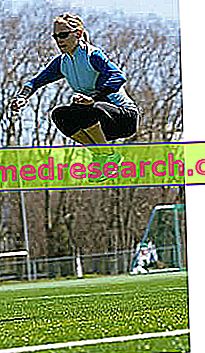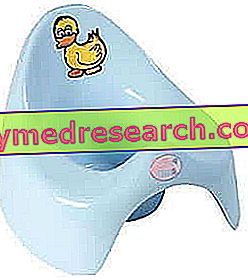By Dr. Simone Losi
Try putting a hand on your stomach and breathing. If you don't feel your belly swelling during inhalation, you probably have impaired breathing.
Do not worry, you are part of the large group of people who breathe mainly with the chest (non-physiological breathing).
Under normal conditions the inhalation should be performed by the Diaphragm (lamina muscle-tendon that separates the thoracic cavity from the abdominal cavity), while the expiration should be passively, unless the expiratory act is forced, in this case the muscle would intervene across the abdomen.
The cause of improper breathing is linked to the modern lifestyle that we all have, made of stress, family and work problems, anxieties ... All this leads to breathe mainly with the upper portion of the coasts and to maintain throughout the day an inspiratory block (in other words, we never throw out the air almost never).
In this way the diaphragm remains locked at the bottom (inspiratory block) and the so-called accessory muscles must take on a job that should actually absolve the diaphragm.
All this causes a retraction of both the diaphragm, due to poor use, and the accessory inspiratory muscles, but in this case due to exaggerated and inadequate use.
The latter are the sternocleidomastoid, the scalenes, the small and large pectoralis, the large dentate, the large dorsal, the lift of the scapula and the trapezium; since most of these muscles are inserted into the neck, cervical pain and cervical pain can be accused. In fact these muscles, which on the practical side should intervene only in the case of physical efforts, come into play almost always because of an incorrect lifestyle.
Before analyzing which dysfunctions can bring a diaphragm that does not work well, let's briefly review a bit of anatomy, to better understand the correlations that this important muscle presents at a muscular and visceral level.
As we have said, it separates the thoracic cavity from the abdominal cavity, it has 2 domes, one on the right and one on the left.
The right dome is related to the liver, while on the left it is related to the stomach and spleen.
The diaphragm consists of a muscular part and a tendinous part; we can divide it according to the points of insertions that are at the sternal level, at the costal level and at the lumbar level.
Precisely in the lumbar area the right abutment is inserted at level L1- L2- L3- L4, while the left pillar is inserted at level L1- L2 and in some cases reaches up to L3.
Recall that two important muscles are inserted at the lumbar level: the psoas muscle and the square of the loins, so the diaphragm also has a direct connection with these two muscles, which create a lumbar hyperlordosis in case of obvious retraction.
The diaphragm has several ligaments that put it in connection also with the heart and the colon; it also has orifices through which the aorta, the esophagus and the inferior vena cava pass.
Below is a list of the main problems a retracted diaphragm can bring:
respiratory problems (asthma, false emphysema)
problems with the digestive system (poor digestion, hiatal hernia, constipation, gastritis)
dysfunctions related to phonation
gynecological problems (diaphragm / perineum connection)
circulatory difficulties (it has a fundamental function as a pump for venous return)
lower back pain (insertion of the diaphragm on the lumbar vertebrae)
worsen the person's posture
How we see unlocking the diaphragm can truly create a 360-degree wellness, both from a muscular, visceral and emotional point of view.
So let's cut out ten minutes of our day to improve our wellbeing, starting with an exercise that will allow you to eliminate stress and anxiety, making you regain your energy and desire to do.

Then put one hand on your belly and one on your chest; try to inhale with the nose, inflating only the belly, leaving the chest still; then exhale with your mouth open, deflating your belly.
The use of two hands is used to become aware of the movement and to understand if you are working with your stomach or if you are doing ribs during breathing.
The air must come out of the mouth in a natural way, as if it were a sigh of relief.
Be careful not to force your breathing because you may experience hyperventilation and feel dizzy; in this case stop and start again slowly.
It only takes a few minutes a day to improve the well-being of your body.
However, it is advisable, especially for the first few times and for particularly tense and retracted people, to rely on a qualified personal trainer who will explain to you precisely the correct breathing. In some cases some release sessions will be required by the therapist using manual and lengthening techniques.
Remember ... breathing is LIFE .....
Without it we would die ...
Good breathing at all ...



